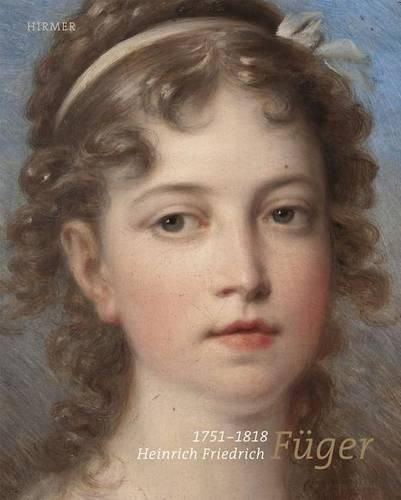Readings Newsletter
Become a Readings Member to make your shopping experience even easier.
Sign in or sign up for free!
You’re not far away from qualifying for FREE standard shipping within Australia
You’ve qualified for FREE standard shipping within Australia
The cart is loading…






English Description: The painter Heinrich Friedrich Fueger, born in Heilbronn, the son of a clergyman, first went to Vienna in 1774, and settled there in 1783 after spending several years in Italy. In 1795 he was appointed director of the Academy, in 1806 to be head of the Imperial Picture Gallery. Rococo at the outset, his style soon developed to become Neo-classical. Fueger’s portraits are outstanding. He does justice to the individuality of his sitters, and they gave him access to the aristocracy. Stylistically, his later portraits emerge into Early Realism. Rooted in his age, Fueger saw his real remit as a painter of monumental history scenes, in which he sought to get away from the models and give expression to eternally valid higher truths in the interplay of form and content. Under Fueger’s leadership, the Viennese Academy flourished, achieving renown throughout Europe. But in spite of his skill, and the high regard in which he was held in his own day, he has all but disappeared from public awareness. The present overview restores his proper art-historical importance with the help of outstanding works. German description: Der bedeutende klassizistische Maler Heinrich Friedrich Fueger war seinerzeit fuer seine virtuosen Portratminiaturen beruehmt. Als Direktor der Wiener Akademie genoss er hoechstes Ansehen. Die Kunsthalle Vogelmann macht sein kunstvolles Schaffen in Ausstellung wie Kuenstlermonographie erstmals wieder umfassend prasent.
$9.00 standard shipping within Australia
FREE standard shipping within Australia for orders over $100.00
Express & International shipping calculated at checkout
English Description: The painter Heinrich Friedrich Fueger, born in Heilbronn, the son of a clergyman, first went to Vienna in 1774, and settled there in 1783 after spending several years in Italy. In 1795 he was appointed director of the Academy, in 1806 to be head of the Imperial Picture Gallery. Rococo at the outset, his style soon developed to become Neo-classical. Fueger’s portraits are outstanding. He does justice to the individuality of his sitters, and they gave him access to the aristocracy. Stylistically, his later portraits emerge into Early Realism. Rooted in his age, Fueger saw his real remit as a painter of monumental history scenes, in which he sought to get away from the models and give expression to eternally valid higher truths in the interplay of form and content. Under Fueger’s leadership, the Viennese Academy flourished, achieving renown throughout Europe. But in spite of his skill, and the high regard in which he was held in his own day, he has all but disappeared from public awareness. The present overview restores his proper art-historical importance with the help of outstanding works. German description: Der bedeutende klassizistische Maler Heinrich Friedrich Fueger war seinerzeit fuer seine virtuosen Portratminiaturen beruehmt. Als Direktor der Wiener Akademie genoss er hoechstes Ansehen. Die Kunsthalle Vogelmann macht sein kunstvolles Schaffen in Ausstellung wie Kuenstlermonographie erstmals wieder umfassend prasent.